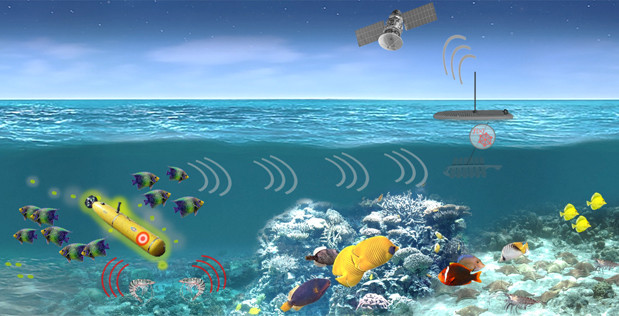Militarised spying dolphins? US military wants to recruit sea creatures to monitor enemy submarines
Darpa's new Persistent Aquatic Living Sensors (PALS) programme will study both natural and modified sea creatures to determine which can best support such hybrid sensor systems.

The US military wants to recruit sea creatures such as fish, mammals and other organisms to spy on enemy submarines. The Pentagon's research arm, the Defense Advanced Research Projects Agency (Darpa), announced a new programme earlier this month. Called Persistent Aquatic Living Sensors (PALS), it will aim to tap into sea creatures' "natural sensing capabilities" to monitor adversaries' naval activities.
The programme will involve Darpa studying both natural and modified sea creatures to determine which of them can best support such hybrid sensor systems. PALS will also analyse the way sea creatures respond to the movement of manned and unmanned underwater vehicles.
Although the US Navy already uses trained sea lions and dolphins to help detect mines and other objects on the ocean floor, Darpa's new programme may see other sea organisms also being used.
"The US Navy's current approach to detecting and monitoring underwater vehicles is hardware-centric and resource intensive. As a result, the capability is mostly used at the tactical level to protect high-value assets like aircraft carriers, and less so at the broader strategic level," PALS programme manager Lori Adornato said in a statement. "If we can tap into the innate sensing capabilities of living organisms that are ubiquitous in the oceans, we can extend our ability to track adversary activity and do so discreetly, on a persistent basis, and with enough precision to characterise the size and type of adversary vehicles."
According to Darpa, apart from the extensive pervasiveness, sensor systems built around living organisms could also provide the US military with numerous advantages. For instance, sea creatures self-replicate and are capable of surviving marine life. In other words, the military would likely be saved the cost of maintaining hardware.
"Evolution has given marine organisms the ability to sense stimuli across domains — tactile, electrical, acoustic, magnetic, chemical, and optical," Darpa said in a statement. "Even extreme low light is not an obstacle to organisms that have evolved to hunt and evade in the dark."
"Our ideal scenario for PALS is to leverage a wide range of native marine organisms, with no need to train, house, or modify them in any way, which would open up this type of sensing to many locations," Adornato said.
It is still uncertain as to how Darpa plans to modify sea creatures to fit the parameters of its goals. It is also unclear as to how the modified sea creatures may impact marine life, if ever deployed.






















